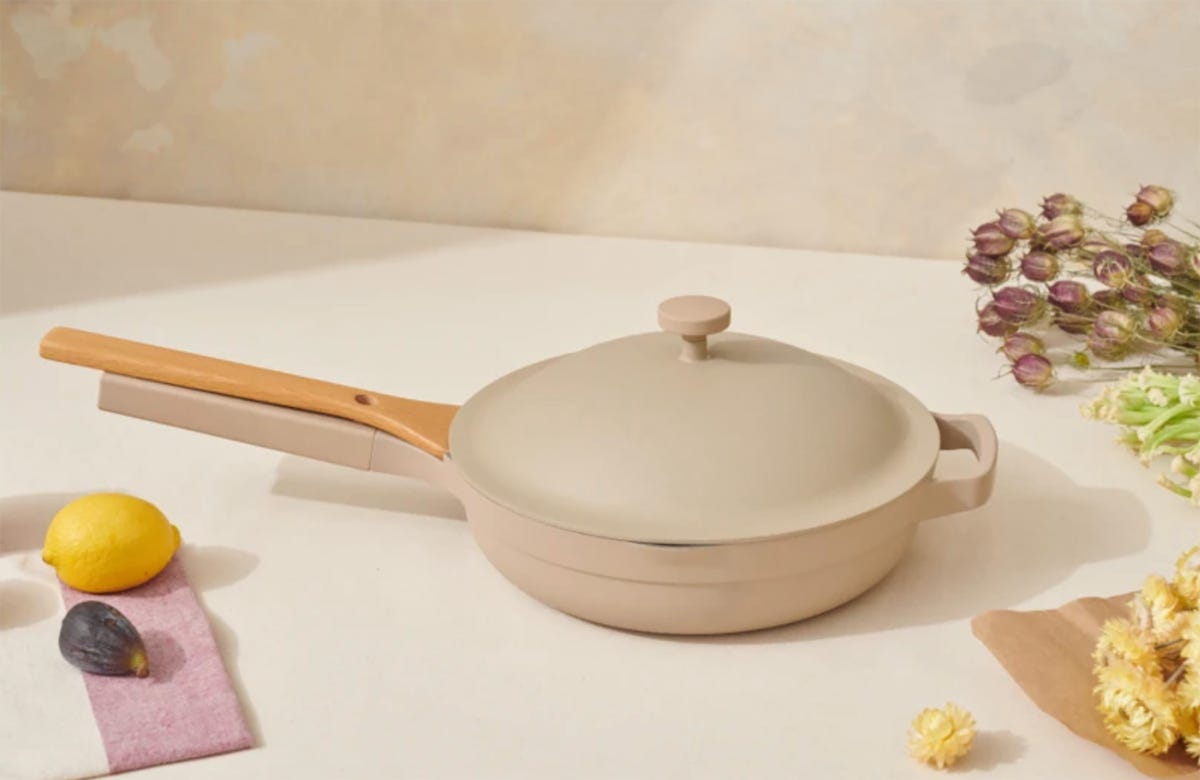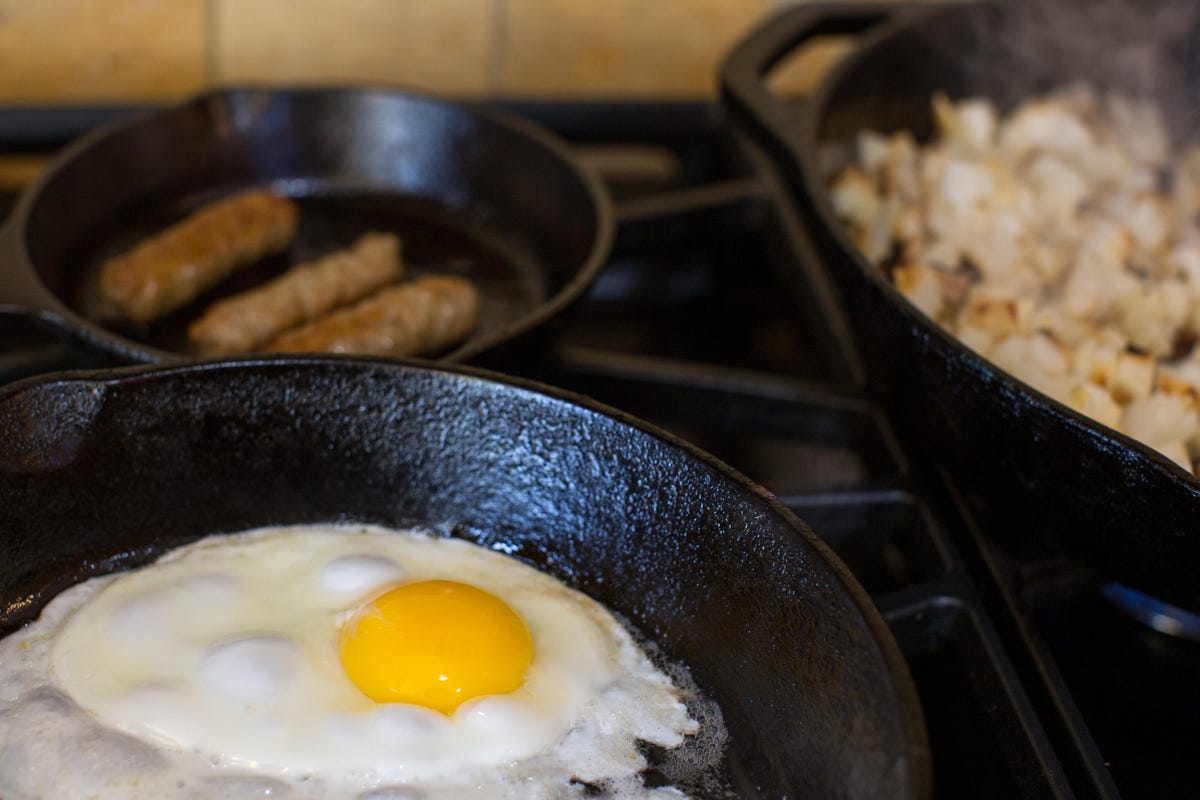According to the Washington Post, there has been a surge in cases of “Teflon flu,” an illness linked to the use of nonstick cookware. More than 250 cases of Teflon flu, which refers to the chemical compound used to make the popular nonstick coating, have been reported in the past year, the most since 2000.
So what is Teflon Flu and are nonstick pans safe to use? The answer is mostly yes, as long as your pans were made after a certain year and you use them properly.
What is Teflon Flu?
Polymer fume fever or “Teflon flu” has reignited the debate over the safety of nonstick cookware. The illness occurs when fumes from an overheated nonstick or Teflon pan are inhaled. Nonstick pans are made of polytetrafluoroethylene (also known as PTFE). PTFE is known as a “forever chemical” because it takes decades, if not hundreds of years, to break down.
Under normal conditions of use, PTFE does not appear to pose a health risk, but when heated above 500 degrees F, emissions increase and the resulting polymer fever. Polymer fever causes a range of reported symptoms, including fever, chills, muscle tension, and headache. Symptoms of Teflon flu are temporary and usually begin within 12 hours of exposure, but can take up to 24 hours to manifest.
How to Avoid Teflon Flu
Nonstick and Teflon cookware are easy to use, clean, and maintain, but they should only be used for low to medium heat cooking. Never heat your nonstick cookware over high or medium heat for extended periods of time. Try to keep the surface temperature at 450 degrees F, or emissions from the PTFE coating may increase.
What is Teflon and does it cause cancer?
Non-stick or Teflon coatings are a popular choice for home cooks. Their main advantage is that food does not stick to Teflon-coated pots and pans like it does with other metal materials, making it easy to flip a pancake or remove a cooked egg. Non-stick coatings are also very easy to clean, usually taking no more than a few seconds to wash by hand.
Teflon is the trade name for a synthetic chemical called polytetrafluoroethylene, which is used in many household products, from wire coatings to fabric protectors to cookware. Teflon is dangerous if consumed or absorbed into the body and can increase the risk of cancer and other diseases. While studies have shown some links (more on that below), Teflon still exists and is used to make cookware, but safety concerns about Teflon are mostly a thing of the past.
And I emphasize Above all. Here’s why…
Although the brand name Teflon may be associated with a cancer risk, it is actually a chemical Previously used in the manufacture of Teflon called PFOA It’s the fault. According to the Centers for Disease Control and Prevention, perfluorooctanoic acid is a perfluorinated chemical manufactured in the 1930s and used to make coatings and fluoropolymer products that resist heat, oil, stains, grease, and water.

Thanks to a federal ban, all Teflon and nonstick cookware manufactured after 2013 should be free of harmful PFOA. Europe enacted the same ban in 2008.
What are the negative effects of PFOA?
Some studies have linked PFOA to cancer, immunodeficiency, and a host of other medical problems. It has also been shown to affect growth and development and damage the liver in laboratory animals.

In 2017, chemical giant Dupont was awarded more than $670 million in compensation for its role in PFOA (also known as C-8) contamination of drinking water in the Ohio Valley. A previous 2004 class action lawsuit in the same region led to a study that found PFOA was linked to cancer and compromised immune function, even in small doses.
Teflon cookware manufactured before 2013 may be toxic
All of this was enough for most manufacturers to stop producing nonstick coatings using PFOA around 2002. But Teflon using PFOA was not officially banned in the United States until 2014. Europe banned it in 2008. This means If you have Teflon nonstick cookware from 2013 or earlier, it may contain PFOA.. Nine years is generally longer than the average lifespan of a nonstick pan, but if you’re unsure, it’s probably best to replace any Teflon-coated pots or pans.
If you’re concerned, look for PFOA-free cookware
Because of the ban, all nonstick cookware made in the United States must be PFOA-free, but you’d be wise to make sure. Be especially careful when buying cheap or off-brand cookware, especially if it’s not made in a country where PFOA is banned. PFOA is still produced elsewhere, primarily in China, and used to make consumer products.
The good news is PFOA free Nonstick cookware is cheapso there’s no reason to take the risk with anything that might contain the chemical. You can get a 10-inch skillet from a trusted cookware brand like Commissioning for $33 or Tramontine for about $25. Luxury cookware brand All-Clad makes a two-piece nonstick cookware set for $50.

The Always Pan is a non-stick ceramic alternative to Teflon cookware.
The Best Natural Alternatives to Non-Stick Cookware
If you’re ready to ditch Teflon and chemical-based nonstick pots and pans altogether, there are plenty of more natural nonstick alternatives.
The most non-stick of the group is ceramic kitchenwarewhich has seen a boom in popularity since concerns about Teflon surfaced. Some popular ceramic cookware options include The Always pan (Read my full review here), Caraway And Green failure.
Melting is another cookware material that develops a natural non-stick coating over time, especially if you season well And take good care of itIt’s unlikely that it will ever become as nonstick as Teflon, but cast iron has many other culinary benefits that make it worth a few extra seconds of scrubbing in the sink after use. Lodge is a tried-and-true cast iron cookware maker: you can buy one 10 inch pan for as little as $24.

Cast iron develops a non-stick patina over time and is a natural alternative to Teflon.
Carbon steel is another option and works similarly to cast iron cookware, though it’s not as heavy, slightly more susceptible to corrosion, and generally more expensive. Carbon steel hasn’t really caught on here in the States, but it’s a favorite of professional chefs, as well as yours truly. Cookware startup Made In makes a great blue carbon steel stove for around $80, but there are cheaper options.